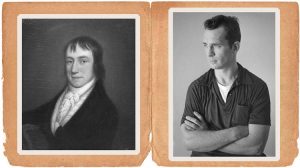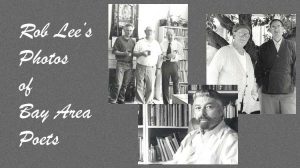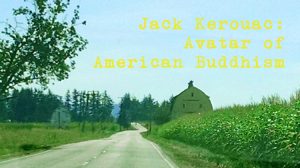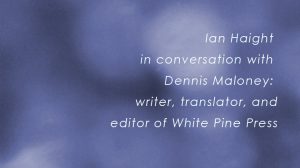We all live inside history, and Carolyn Cassady has seen her share. Ms. Cassady was gracious and open when she sat for an interview at her home in Monte Sereno, not far from Los Gatos.
Carolyn Cassady, best known for her relationships with husband Neal Cassady and novelist Jack Kerouac, is an attractive woman with an easy laugh. The fifth child of a Nashville biochemistry professor, Carolyn came from most “stiff-necked, Victorian background” imaginable and earned a degree in drama from Bennington College. While in Denver for graduate school, she met Neal Cassady.

Cassady was probably better known as a personality, the mythic talker/tripper/motorhead, rather than as an author, but he fueled and supercharged the Beat vision with his “continuous chain of undisciplined thought.”
It was said that Cassady was the fastest man alive, that he could talk for seven days straight and never repeat himself, that he’d stolen 300 cars. It was said that Cassady had a car and a girl when everyone else was in Little League, that he had twice the energy of regular mortals, that he had no fear.
Cassady and Kerouac were fast friends, and their relationship with Carolyn was the subject of her book Heartbeat, which was made into a movie of the same name.
Carolyn Cassady herself was cast by Kerouac as Camille in On the Road and Evelyn in Big Sur, but some of her revelations showed that being a literary immortal might not be all it’s cracked up to be.
“When I think about what history we get, and what really happens,” mused Carolyn. “Napoleon was probably seven feet tall — everything is so distorted.”
One good example of that distortion is the popular belief that the celebrated triangle of Neal & Carolyn & Jack took place at their house in Los Gatos, when it actually happened in nearby San Jose.
In an easy Tennessee accent, Carolyn told of Neal & Jack’s tight friendship, how “they were always cracking each other up all the time…how much they did for each other, how up they were, how supportive…Everyone should have friends like that.”
Carolyn replied that, no, Cassady didn’t feel exploited when cast as Dean Moriarity in On the Road. “Nowadays they say so,” she explained. “I never got that impression at all. He loved Jack, and he certainly wasn’t doing it purposefully-Jack wouldn’t have done that. And anyway Jack didn’t feel he was saying anything anti-establishment. His was just a celebration of life — just live and express yourself.”

Jack Kerouac drank himself to death in 1969.
Despite Neal’s reputation as a frenetic hipster, “I just realized that there weren’t that many trips,” Carolyn said. “It sounds as though they were doing this all the time. Half of them were coming home again — people don’t realize that Jack was going home and Neal was coming home. There weren’t that many anyhow…Jack took a trip once a year and Neal would take quickies here and there. But we had a very settled home-life for ten years.”
While incarcerated in San Quentin, Neal shaved his head and fasted for three days before he saw a Catholic priest, Carolyn said. Cassady had been given two sentences of five-to-life for marijuana offenses.
Today, Carolyn jokes about the quality of Neal’s dope. “When I see these guys cultivating now…we didn’t know the first thing about it.”
Because of the evil weed and an article in the local daily paper, Cassady lost his beloved brakeman’s job on the Southern Pacific railroad. After Neal was arrested, Carolyn said, “The very next morning the Mercury-News printed this story. This eager-beaver reporter talked to some police chief-and none of them knew nothing yet-so they make up this wonderful story about how Neal was part of a gang that was importing marijuana from Los Angeles and Mexico on the Southern Pacific trains. That’s why he could never get his job on the Southern Pacific again. Even though they retracted it, they said it didn’t matter — it was in the paper. So they never took him back, and that’s what killed him.”
Carolyn herself is opposed to drugs for a variety of reasons, the main one being her staid, aristocratic background. “I grew up seeing Reefer Madness and stuff like that,” she said. “We really thought it was something completely terrible. There was nothing worse than dope.”
Neal Cassady won a lot of his notoriety from his days as the pilot of the Merry Pranksters, the hippie band that included Ken Babbs and novelist Ken Kesey. In The Electric Kool-Aid Acid Test, Tom Wolfe sanctified Cassady’s acid-fueled cross-country trip with the Pranksters in their lurid school bus “Furthur.”
Tom Wolfe may have made it look like a ton of subversive fun, but Carolyn remembered it in a much darker light. “The saddest thing about the whole Kesey years — which were just the last five years of Neal’s life–he was already dead so far as we were concerned,” she said. “He was so miserable then. So strange that he had such a powerful effect on everyone who knew him then, and on all the Pranksters.”
“But it’s like two different worlds,” Ms. Cassady said. “Ken Babbs came out with his magazine [Spit in the Ocean]…I can hardly stand to read it, except some other doctorate person told me how wonderful it was. It’s the same thing, it just tears me up because under everything he’s saying and doing, I know how he really felt and what it all meant.”
“They got very insulted when I said that he was like a trained bear for them, a court jester,” Carolyn said, “but they can’t see that at all, which amazes me. They feel very insulted, that I’m blaming him for his condition — of course I’m not blaming them for his condition — but they never seemed to realize what he was going through.”
“Even in those stories, Ken is being condescending, treating him like an it…’Make sure someone rides shotgun next to him and listens to him and don’t hurt him’…while they’re busy doing something else. It’s treating him like a child. That is not love.”
Carolyn Cassady laughed, a little bitterly. “The guy was alone, they were never with him. He was always performing…I was just sick.” Other people who talked to Neal at the time got the same impression, she added.
One time when Neal came home, Carolyn said, “He was at the Farm and just walked away, without his cigarettes or his jacket-anything. He hitchhiked down to Mill Valley & called me. He sounded terrible, said he was sick. So I went to get him and he said, ‘I just couldn’t stand it.'”
“I asked him, ‘Why do you do it if it makes you so miserable?’ and he said, ‘I can’t help it…everyone just keeps looking at me, expecting me to do something, so what the hell.’ He was dead anyway, wanted to die so badly.”
Even when discussing one of the most disputed things about Neal Cassady, his 1968 death in Mexico, Carolyn spoke with little hesitation.
“All the legends about his death…also in that magazine [Spit in the Ocean], Babbs was saying not to expect everything to be absolute fact and he quoted whoever it is that there is more truth than facts. I agree, but his distortions are so subtle in the thing that they’re very hard to sort out, and it just adds to the confusion.”
“Take Kesey’s wonderful story, ‘The Day After Superman Died.’ He began to set up all these confusions…it’s such a nice story and he says it’s fictionalized, but they really believe he was counting railroad ties when he died. I’ve heard that so many places already.”
The story is that Cassady collapsed on the railroad track between Puerto Sancto and the next village, supposedly counting the number of railroad ties in that thirty-mile stretch. Some accounts have Cassady mixing tequila and Seconal that night.
“Well,” explained Ms. Cassady, “it’s a wonderful story, but there’s this other guy in Tucson who’s been writing me for six months, trying to find out what did happen. But he did go down there and he said that Neal’s last words couldn’t have been ‘Sixty-nine thousand,’ or whatever it is, because it’s only a hundred yards from where he started!”
“There’s those kids who say they were there, but we don’t know who they are, where they’ve gone…. When the gal called me at about eleven o’clock in the morning, she said Neal died an hour ago…or about an hour ago…she did say he lived an hour after he was picked up. Well, his death certificate said they picked him up at five a.m., but he didn’t die until 1 p.m. and so on and so on.”
“And someone said he was taken in a truck and he was outside in the truck for a while. There’s been a lot of mix-ups and nobody knows what really happened.”
It seems that Carolyn Cassady has accepted all of it with a minimum of regret. Neal was a “sacrificial lamb” who changed her irrevocably. For a long time, she didn’t understand what Neal was driving at, what he was trying to say.
“But,” said Carolyn Cassady, “now I know what he meant.”



